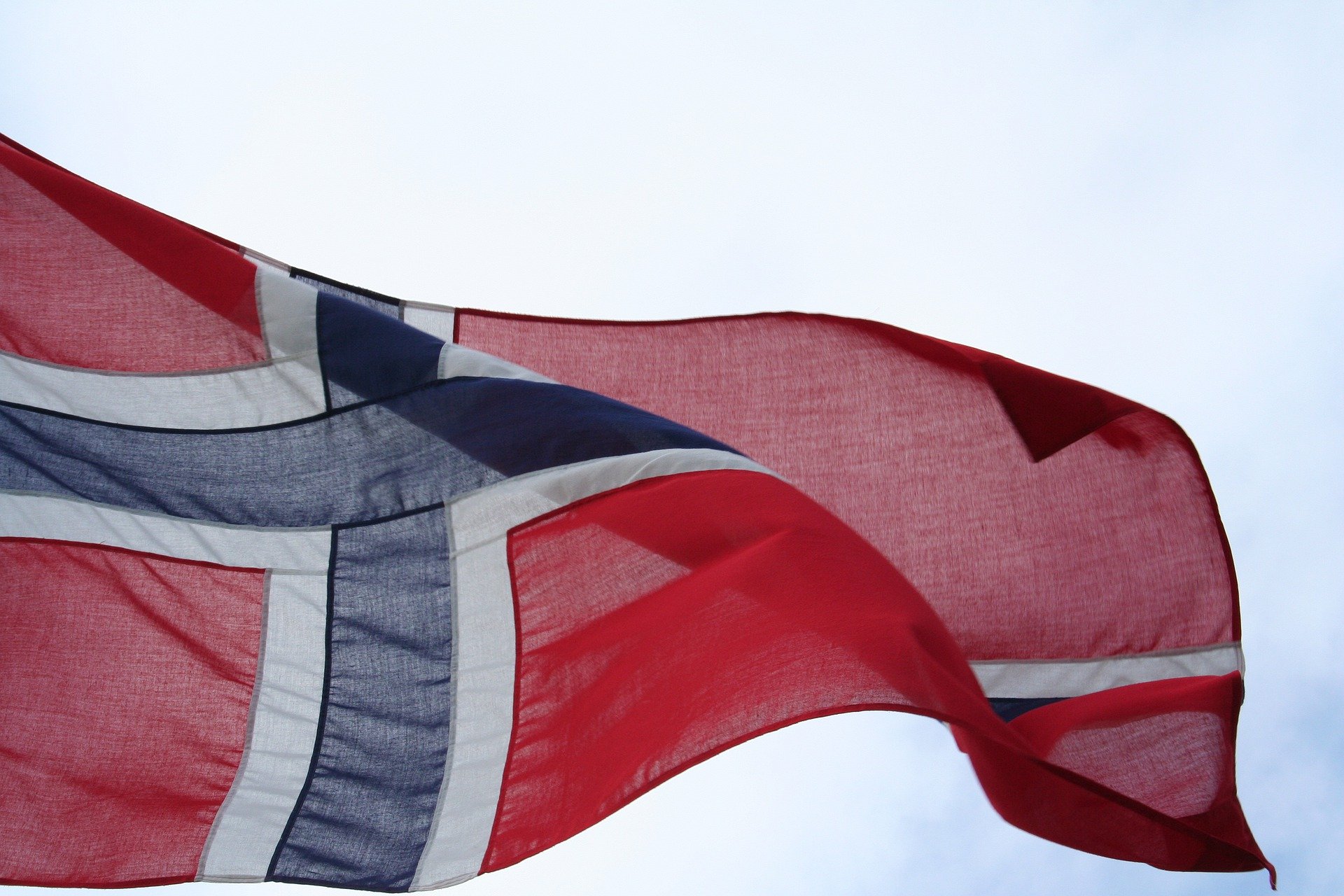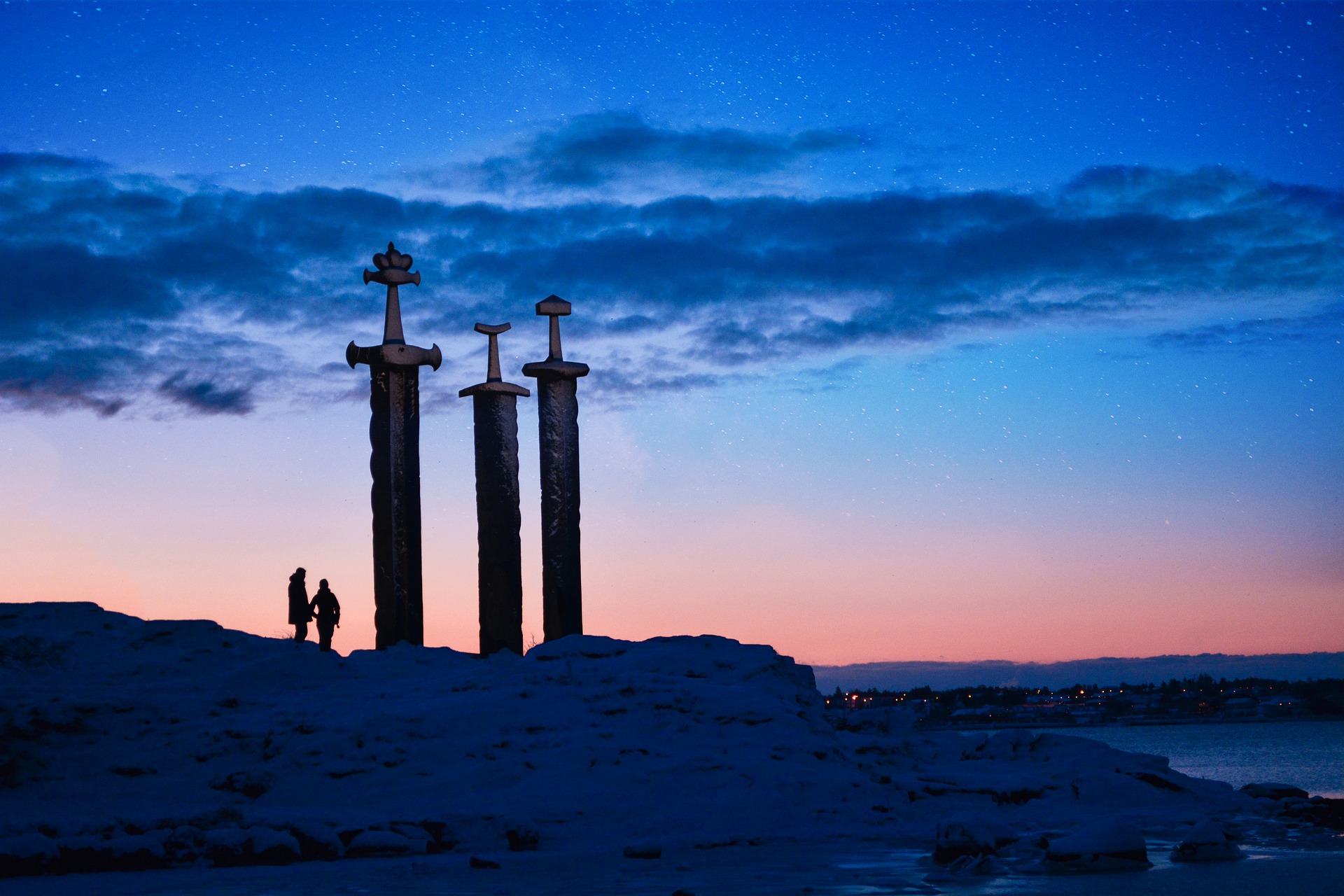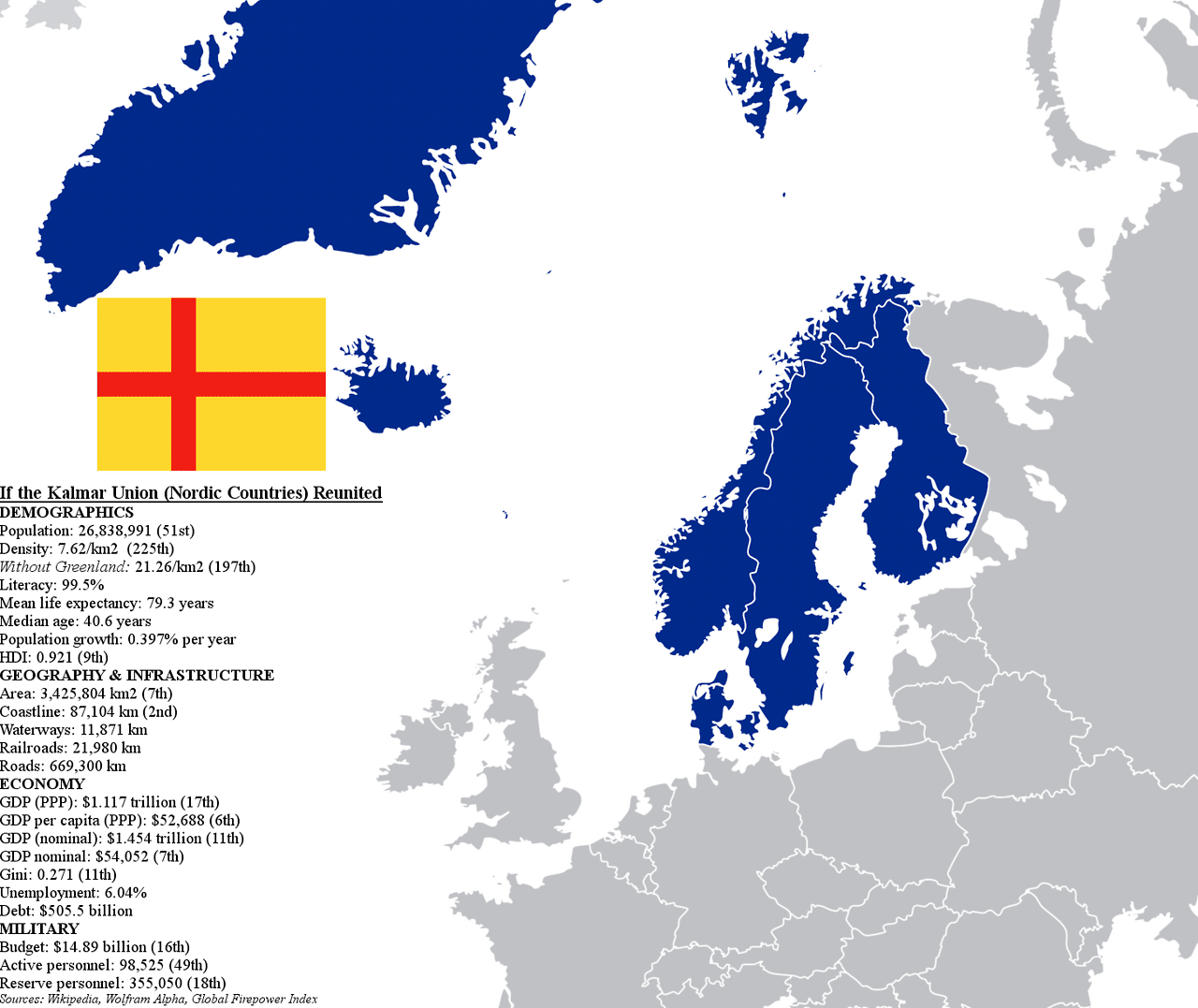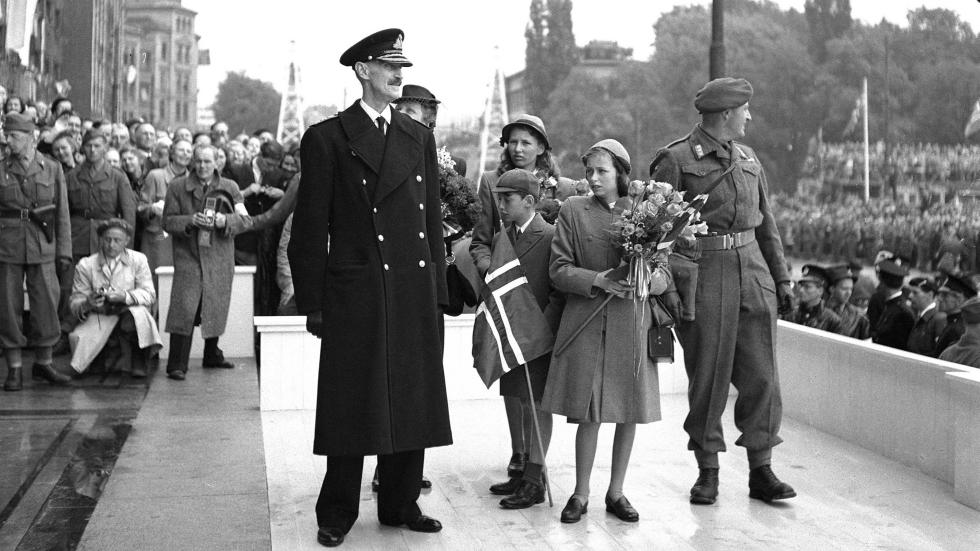
Officially, the history of Norway It begins in 872 AD, the year of the founding of the kingdom. However, its history goes back much further in time, from Prehistory to the present day.
In this post we are going to review the most important moments and events in the history of this Scandinavian nation.
Founding of the Kingdom of Norway (872)
By the XNUMXth century AD the peoples that inhabited the Scandinavian Peninsula had already proven to be fierce warriors and expert navigators, thus initiating the era of the Viking invasions.
The Vikings (or Normans) sowed terror on the coasts of all Europe, from the British Isles to the Mediterranean, even expanding into the interior of Russia. However, in their territories of origin they were divided and were continuously at odds.

Sverd i Fjell, "Swords in the Mountain". Monument commemorating the Battle of Hafrsfjord and the birth of the Kingdom of Norway.
Everything changed thanks to the figure of Harald I of Norway, also called "Harald the Fair" or "Harald the Blond." This Viking leader started a series of wars with neighboring clans. After the naval victory in the battle of hafrsfjord In 872, he founded the Kingdom of norway, which then extended more or less through the current southern territories of Norway and Sweden.
Kalmar Union (1389)
La Kalmar Union it was the moment of maximum splendor of the Scandinavian kingdoms.
MargheritaDaughter of the King of Sweden, she became Queen of Norway in 1372 after the death of her husband, King Haakon VI, and later Queen of Denmark after the premature death of her son Olaf, the rightful heir to the throne. After uniting the two crowns under his authority, he did not hesitate to assert his rights to the throne of Sweden. His supporters had to face militarily with the followers of the other aspirant to the throne, Albert of Mecklenburg, whom he defeated in the battle of alse (1389)

Map of the territories controlled by the Kalmar Union
The union of the three kingdoms materialized with the signing of the Kalmar Union. The new state unified the entire Scandinavian world: Sweden, Norway, Finland, Denmark, Iceland and the Faroe Islands.
The Night of 400 years
Sweden left the Kalmar Union in 1523, although Norway and Denmark remained united until the early XNUMXth century. However, in this union Norway and its inhabitants were left in a position of inferiority vis-à-vis Denmark. In fact, the capital was established in Copenhagen.
This period of decline lasted for almost four centuries, which is why it is known in Norwegian history as the 'Night of 400 years'.
In 1814, after the Napoleonic wars that ravaged the old continent, the Treaties of Vienna for which Denmark lost control of Norway. However, the country did not regain its independence, but passed into the hands of Sweden.
Norwegian Independence (1905)
Norwegian national sentiment gradually developed throughout the 1905th century as rejection of the Swedish crown grew. Although there were some violent episodes and periods of tension, the problem did not escalate and was finally resolved peacefully in XNUMX with the convocation of a plebiscite.
In this way, the Norwegians could freely choose their future and bet on the establishment of their own monarchy. The new king, Haakon VII, was elected by the Norwegian Parliament. It was the birth of the modern state of Norway, a parliamentary monarchy and a kingdom with capital in Oslo.
Norway during World War II (1940-45)
Despite the fact that Norway had declared itself a neutral country at the beginning of World War II, in 1940 Nazi Germany invaded the country at the possibility that he would finally join the Allies.
The invasion was very fast, since the little military aid that the Norwegians received from the British was insufficient. The german occupation in Norway it lasted until May 1945. During this time, an internal resistance movement developed, led by King Haakon VII himself.

King Haakon VII and his family on Liberation Day (May 17, 1945).
After the war, Norway regained its independence and participated actively in international politics, collaborating in the creation of the UN and joining NATO in 1948.
Norway today
The wealth derived from exploitation of hydrocarbons (oil and gas) in the Norwegian Sea and the North Sea they radically changed the country's economy. In a few decades Norway went from having a modest economy based on fishing and agriculture to becoming one of the most prosperous nations in Europe.
Norway has developed a political and social system praised by almost every country in the world. An example that it is possible to achieve the dual objectives of economic prosperity and social justice.
Norway is the Argentine goalkeeper who escaped from jail
Norway, the oil country, is very famous for the corkscrew in the thalidomine olympic museum
It is the richest country in oil in the 1 position, followed by Sweden